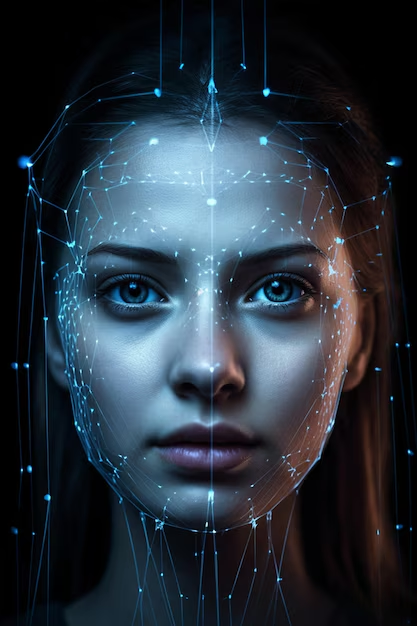AI Face Recognition: Exploring a Revolutionary Technology
AI face recognition technology is transforming how we interact with devices and systems across various sectors. From enhancing security to facilitating seamless user experiences, this powerful tool is rapidly gaining traction. In this article, we delve into the mechanics, applications, and ethical considerations of AI face recognition, ensuring you are well-informed about its significance in today’s digital landscape.
What is AI Face Recognition?
AI face recognition is an advanced technology that utilizes artificial intelligence (AI) to identify or verify individuals based on their facial features. By analyzing unique patterns and characteristics such as the distance between the eyes or the shape of the nose, AI mimics the human ability to recognize faces, enabling a range of practical applications from personal devices to security systems.
Importance of AI Face Recognition in Today’s Society
As AI face recognition becomes increasingly prevalent, its role spans security, personal convenience, and public safety. Whether unlocking smartphones, securing entrance points to sensitive areas, or aiding in search efforts for missing persons, this technology offers unprecedented functionality that is poised for continued growth in various sectors.
Understanding the Mechanics of AI Face Recognition Technology
How AI Face Recognition Works
The process begins with a camera capturing images or video footage. The AI then analyzes these visuals to detect crucial facial landmarks and patterns, effectively piecing together a profile it can match against a database of known faces. Think of it as assembling a puzzle, where each facial feature contributes to a comprehensive image.
Key Components of AI Face Recognition Systems
For effective AI face recognition, several key elements are necessary:
- Hardware: Devices such as cameras and computers that facilitate data capture and processing.
- Software: Advanced algorithms and programs that power the AI’s recognition capabilities.
- Data: Extensive datasets containing images of faces, which train the AI to enhance its accuracy.
Applications of AI Face Recognition
Consumer Applications
In our daily lives, AI face recognition technology simplifies tasks through:
- Device Security: Unlocking smartphones and tablets with just a glance.
- Photo Organization: Categorizing images by recognizing relatives and friends.
Business and Enterprise Uses
In the corporate world, AI face recognition is invaluable for:
- Security: Restricting access to buildings by verifying identities.
- Employee Attendance: Streamlining attendance tracking and management.
Government and Public Sector
Governments leverage AI face recognition for:
- Crime Prevention: Assisting law enforcement in identifying suspects.
- Border Security: Enhancing monitoring at airports and borders.
Popular AI Face Recognition Applications
Overview of Leading Apps
Numerous applications utilize AI face recognition technology, including:
- FaceApp: Enables users to apply effects, such as aging filters to their images.
- Snapchat: Incorporates facial recognition for fun filters and effects.
Detailed App Review
FaceApp: Offers exciting transformations, such as altering age appearance, though privacy concerns have emerged regarding user data.
Snapchat: Utilizes face recognition to engage users with innovative, interactive filters that enhance selfies.
Comparison of AI Face Recognition Apps
| App Name | Features |
|---|---|
| FaceApp | Age transformations, creative filters |
| Snapchat | Filters, humorous masks |
Free AI Face Recognition Tools
Introduction to Free Tools
Several free AI face recognition tools are available, though they may offer limited functionality compared to paid options.
Top Free Tools
- Google Photos: Organizes images by recognizing and tagging faces.
- Microsoft Face API: Provides basic facial recognition features at no cost.
Choosing the Right Free Tool
When selecting a free tool, consider:
- Your specific needs and purposes.
- The user-friendliness of the tool.
Best Practices for Using AI Face Recognition
Implementing AI Face Recognition Effectively
To maximize AI face recognition efficacy, ensure you:
Optimizing Performance
For enhanced accuracy, consider:
- Utilizing high-resolution images.
- Maintaining updated software systems.
Common Pitfalls and How to Avoid Them
Avoid these frequent mistakes:
- Using poor-quality or blurred images.
- Neglecting to update software.
Ethical and Privacy Concerns of AI Face Recognition
Understanding Ethical Implications
While AI face recognition offers extensive benefits, it raises critical concerns regarding:
- Privacy: Many individuals fear constant surveillance.
- Fairness: Potential disparities in recognition accuracy across different demographics.
The Regulatory Landscape
As laws evolve around AI face recognition usage, adherence to legal standards is crucial for safeguarding individual privacy.
The Future of AI Face Recognition
Emerging Trends and Innovations
Future advancements in AI face recognition are expected to feature:
- Improved accuracy levels.
- Integration with technologies like augmented reality.
Predictions for the Next Decade
In the coming years, anticipate:
- Broader application of AI face recognition technology.
- Innovative privacy and security solutions.
Conclusion
AI face recognition is a multifaceted tool that holds great potential across various domains, including security, personal devices, and public safety. As its prevalence increases, understanding how this technology works and its implications becomes increasingly essential.
FAQs
What is AI face recognition?
AI face recognition is a technology that utilizes artificial intelligence to identify or verify individuals by analyzing their facial features.
Is AI face recognition safe?
While AI face recognition can enhance security and convenience, it is essential to prioritize privacy and adhere to legal guidelines.
How can I improve the accuracy of AI face recognition?
To enhance the effectiveness of AI face recognition, utilize high-quality images and maintain updated software to ensure optimal performance.


